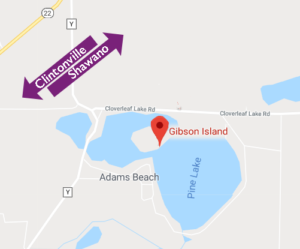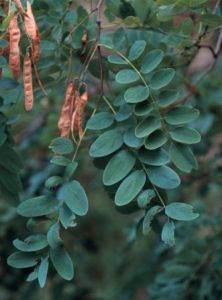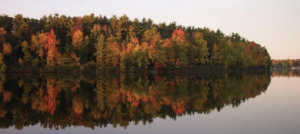Grant helps protect island from invasives
When developers planned to build condominiums on a 25.6-acre slice of nature between Clintonville and Shawano where area residents enjoy hiking and snowshoeing, a group rose up to buy the property for the Town of Belle Plaine.
It took three years (2003-06) to secure a state grant and private donations, but Gibson Island remained accessible to the public. Now it faces another threat.

Highly invasive black locust trees threaten to crowd out native plants and wildlife. The town’s Gibson Island Committee has taken on the invaders, girdling the bigger trees and cutting down and poisoning the smaller stems.

Black locust
What they need now is native shrubs and woody perennials like purple aster and Joe pye weed to fill the space where the black locusts will try to return. A $2,500 grant from the Environmental Stewardship Fund within the Community Foundation and $1,720 from the Clintonville Area Foundation will help make those plantings happen.
“It’s a jewel. It’s very special,” committee member Joy Krubsack said about Gibson Island. Native wildflowers decorate the trails in spring and American bald eagles have nested high up in the trees since the 1970s.

Dennis Thornton photo
Plants purchased with the grant will be planted on public property. For more information on the project, contact the Town of Belle Plaine Gibson Island Committee, N3002 State Highway 22, Clintonville, WI 54929.
The Environmental Stewardship Fund was created in 2003 when the Community Foundation Board of Directors approved $50,000 to match gifts from donors for a permanent endowment to provide grants for environmental projects. Fifty-four donors contributed at lease $1,000 each. The fund continues to support environmental projects with grants of up to $2,500.
Want more stories like this? Sign up to get in The Loop. And don’t forget to invite a friend to join, too.



Leave a Comment